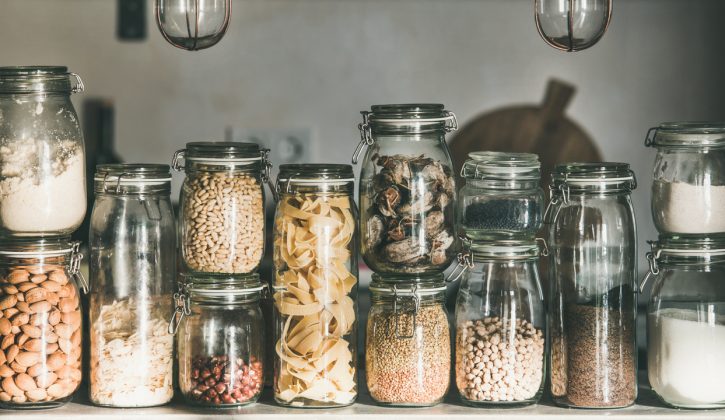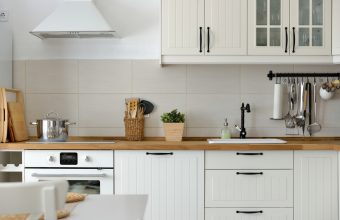The year still feels all brand-new and sparkly. And maybe you’re ready for a project? It’s not quite time for spring-cleaning, but converting your kitchen or pantry to a zero-waste pantry is a great winter indoor project with lots of benefits.
Why Go Zero Waste?
First, it gets us off the cycle of buying groceries in single-use packaging. Every time I touch plastic, I now realize that the making of this material is harmful for the environment and that most forms of it will linger for hundreds of years. I don’t want to be part of that disaster scenario. Even paper and cardboard materials involve resources that simply aren’t necessary to consume. So moving to a zero-waste pantry helps with environmental impact.
This approach also saves money. When you buy in bulk, you’re paying just for the product, not all the packaging or advertising. And you can get just the amount you need, rather than buying what is offered.
And the final benefit is that for those of us who prefer a light, bright, minimalist and organized approach, there is something super satisfying about abandoning garish packaging and having grocery items tucked up in glass jars with matching labels.
How to Stock a Zero-Waste Pantry
Not sure how to get started? It’s easier than it sounds with some advance preparation.
Assemble your equipment: You’ll need a variety of containers for your pantry (and fridge, should you tackle that as well). Glass jars work very well for the pantry. Re-use spice jars and glass juice bottles for items of which you only need small quantities. Mason jars are wonderful and are available in a variety of sizes. Repurpose spaghetti sauce and jam jars. For larger containers, glass jars with close-fitting lids work well. To deodorize jars, soak them in water and baking soda for 30 minutes. To remove sticky label residue, try scrubbing with eucalyptus essential oil. For labels, try your own label maker, make paper labels, or use chalkboard paint.
Shopping Supplies: Yes, you’ll need to take a few items with you to the store. Re-usable grocery bags are a no-brainer, right? And reusable produce bags. I bring glass containers to get meat and cheese from the deli counter. And finally, I bring cloth bulk bags for dry goods like pasta, rice, beans, nuts and seeds. I bring containers for baking supplies, nut butters, coconut oil, and margarine. I buy preserved peaches in glass jars and reuse them in my pantry. It only adds seconds to your shop and can quickly become a habit.
View this post on Instagram
At the Bulk Store: When shopping with containers, whether at the deli counter or at the bulk store, they simply need to do a tare weight on your container – basically weighing your empty container so that you are only charged for the weight of your food. At the deli counter, they can do this and then immediately start filling your containers. At a bulk store, take your (clean and empty) containers to the cash first, where they will do the tare weights on all of your bags and containers, and then you shop. Easy peasy!
View this post on Instagram
Display: Now comes the fun part – arranging your beautiful zero-waste pantry. Or perhaps you have the gorgeous, on-trend open shelf kitchen so popular in Scandinavian design. Your dry goods will look gorgeous in glass jars, artfully arranged on open shelves. Snacks, teas and other often-used items look great in a designated nook or on a counter. And your pantry or shelves – well, you’ll find yourself opening the doors just to admire the minimalist, uniform and organized presentation of foodstuffs.
View this post on Instagram
Call it de-cluttering. Call it minimalism. Call it zero-waste, plastic minimization, sustainability, or eco-friendly. There are so many reasons to redo your pantry with a zero-waste plan. Have fun getting organized!
Tagged under: home organization,kitchen,kitchen organization,Pantry staples,pantry organizing,zero waste pantry
Category: organization,family-life,home






